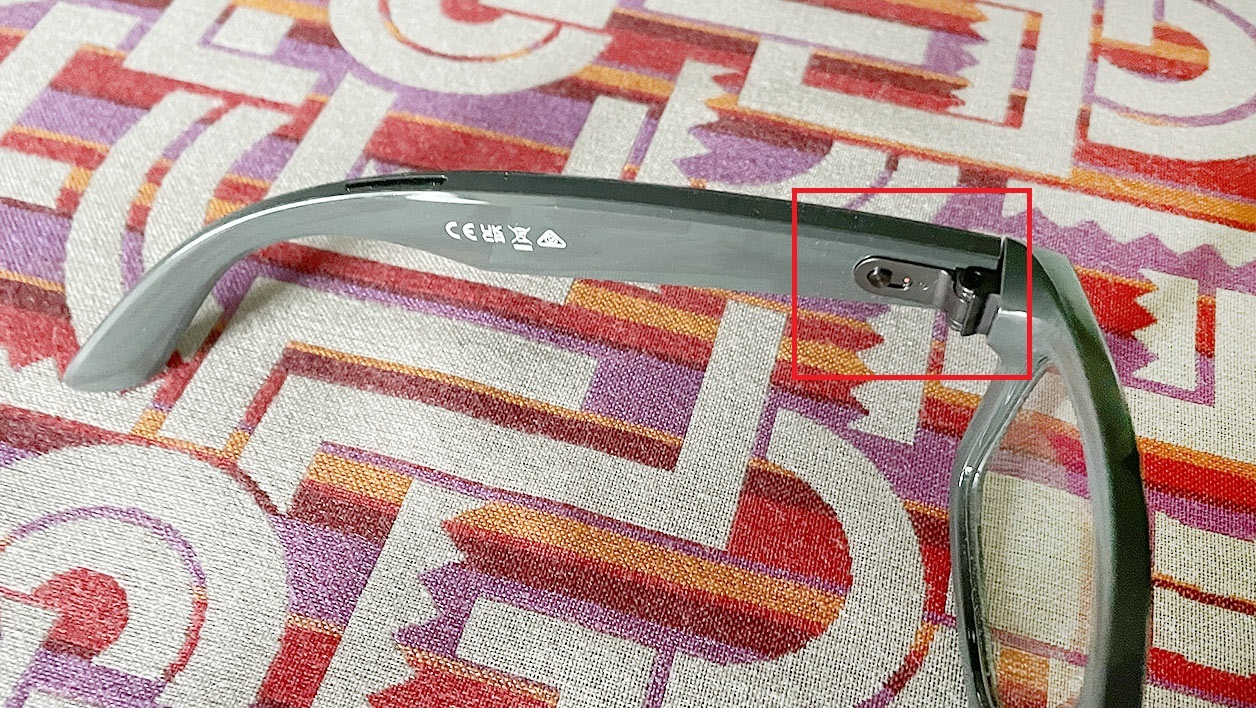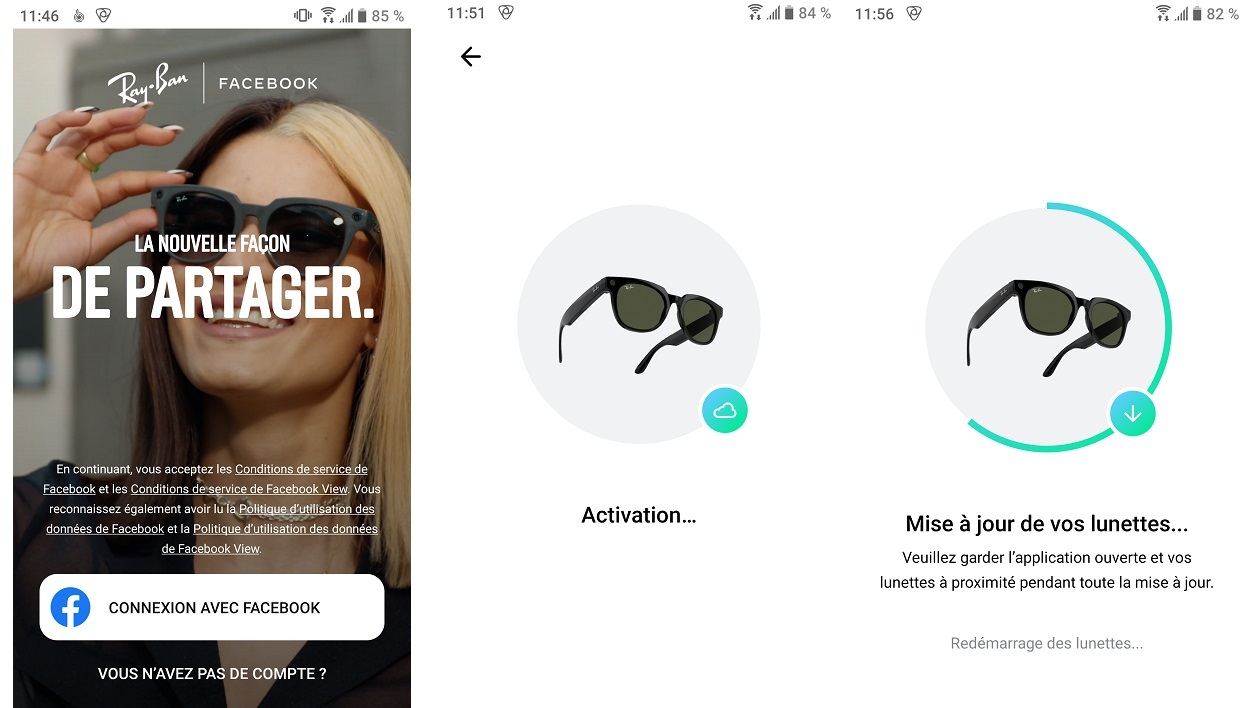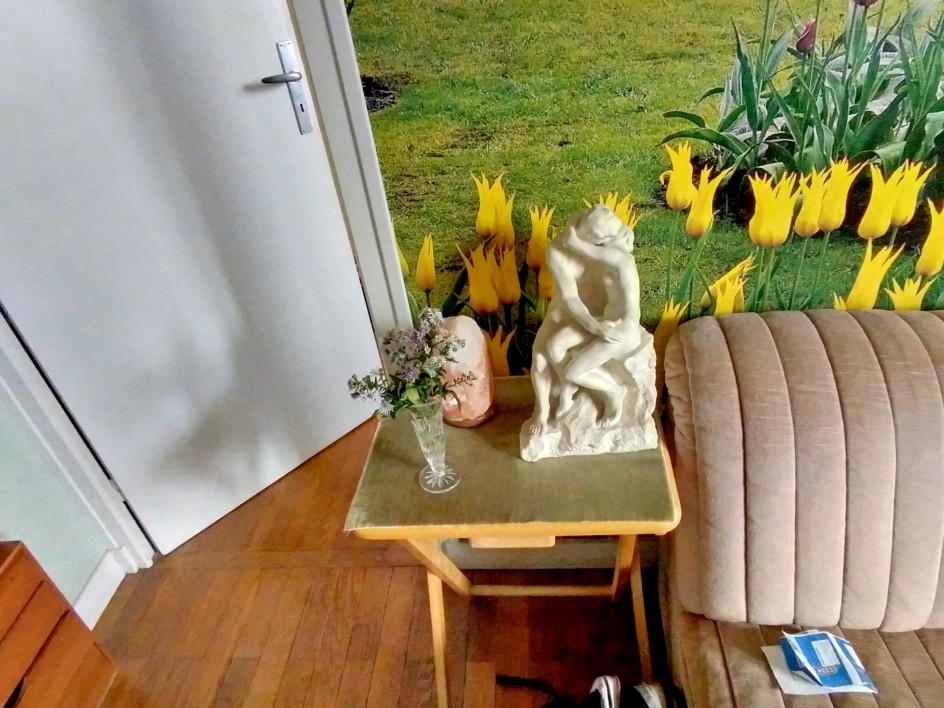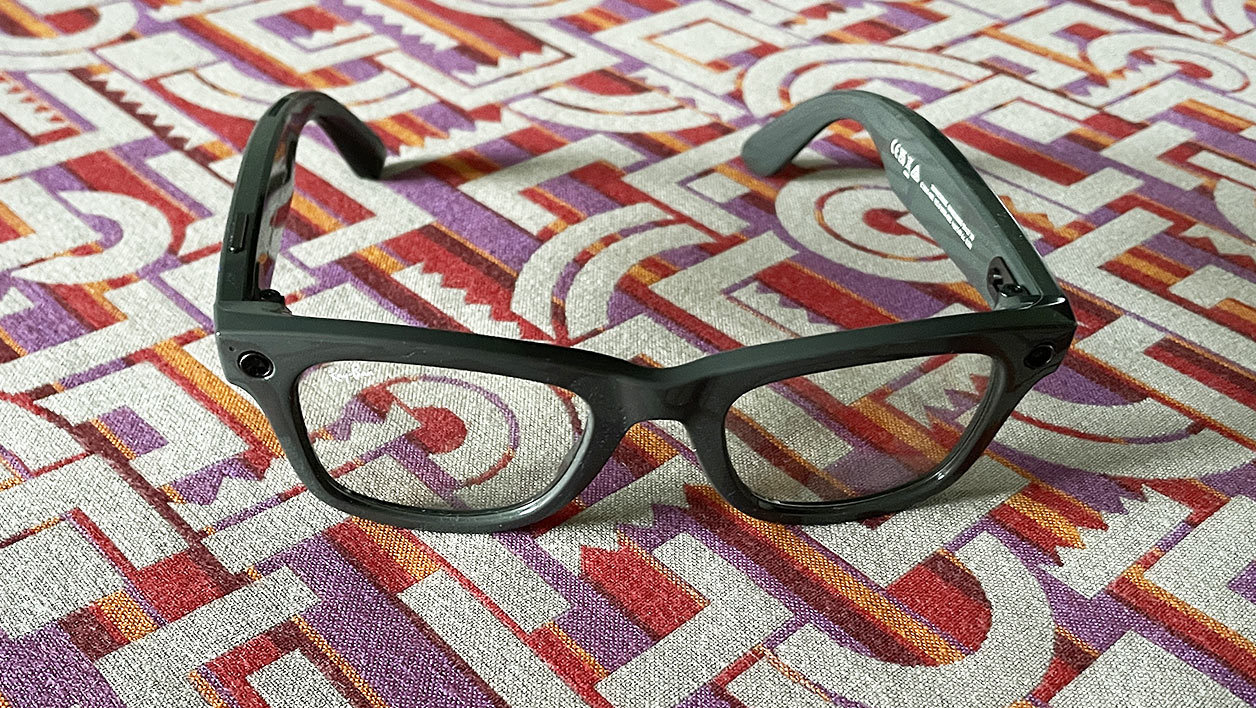When Facebook joins a major eyewear maker, Ray-Ban, we can’t help but be very curious about the outcome, in this case a set of connected glasses. There is no virtual or augmented reality in Ray-Ban Stories, the goal is to be able to easily take photos and videos, without having to take out your smartphone, and then share them with your loved ones. If the Metaverse is still a long way off, it might nevertheless be a first step towards physically integrating Facebook into your everyday life…
Unfortunately, Ray-Ban stories are not currently sold in France. That’s why we went to Italy, the country of Ray-Ban’s parent company, to get a pair. We chose the legendary model, the Wayfarer, with photochromic lenses, which are somewhat tinted depending on the amount of sunlight. In the absence of the sun, it is completely transparent.
Precise integration
At first glance, Ray-Ban stories look like the classic Wayfarer game. We only note that there are two small targets located at the ends.

So where did the manufacturer put the battery and other electronic components? In the branches! These are much larger than traditional solar versions. But in the end, that extra amount didn’t stop us from carrying it.
Playing stories simply requires flipping a slider switch on the inner side of the left branch. This key is also used for Bluetooth pairing.

Facebook View app required
Then we are ready to take pictures, but not glasses! In fact, they need to have the Facebook View app installed on the smartphone they are connected to. Unsurprisingly, the app requires a … Facebook account. For the first use, the app turns on Bluetooth pairing, then Stories activates. It also updates a file Firmware Glasses, if necessary.

We can now turn off our smartphone and start taking photos and videos. For this, the right branch, at the top, has a button dedicated to this function. The principle is simple: a long press of the button takes a photo, while one press starts and stops video recording, within 30 seconds. An audible signal indicates the process in progress.

On the other hand, we accidentally pressed the button several times while holding the glasses by the temples, for example to remove them. So you have to be a little careful.
We talked to our smart glasses
We were also able to use voice commands, for example say « Hey Facebook, take a picture » to take a shot. These verbal interactions work even when the smartphone is turned off and can come in handy if your hands are occupied. On the other hand, you cannot activate your smartphone assistant in this way.
As for the famous diode that Facebook touts to warn those around you that you’re filming or filming them, it’s very conservative. You can see it in the image below (the small white dot on the far left).

According to the manufacturer, the internal storage accepts up to 500 photos or 30 30-second videos.
Wi-Fi to transfer photos
To see the outcome of the shoot, we had to take out our smartphone and use the Facebook View app. The process is simple: just touch the transfer button in the app. Unfortunately, it is not possible to preview photos and videos before uploading them, perhaps to delete the ones you don’t want. You have no choice, you have to move everything! However, the process does not take long, because Stories uses a direct Wi-Fi connection, much faster than Bluetooth. The photos and videos are then automatically erased from the eyeglasses’ internal memory and stored in a secure area of the app.
You can then share it with another program (Facebook, Gmail, etc.) or save it to the Downloads folder on your smartphone. It is a pity that the app does not allow you to post photos and videos directly to your Facebook account.

The Facebook View app also offers some image editing functionality, as well as creating three types of animation, called Flashback, with depth and motion effects, among other things.
Very shimmering colors
Are the photos and videos taken by the glasses of good quality? Outdoors, the 2592 x 1944 pixel JPeg images are quite satisfactory, but the colors are a bit saturated and unnatural (click image for a larger view).

In the video, we got MP4 sequences at 30 fps at 1248 x 1248 pixels or 1264 x 1264 pixels, not knowing why the size is not consistent from one file to another.
The fluidity is just right as well as the stability that allows you to walk without causing big tremors in the video. But again, the colors are not natural enough (see image taken from a video below). In addition, the reduced definition limits the use of videos for simple sharing on social networks.

Indoors, the shots are correct if the lighting is sufficient, because the glasses do not have a flash. However, there is a significant loss of detail if the image is viewed in a 1:1 scale (click on the image below to enlarge).

In our tests, we were able to use the glasses for several hours without having to charge them, which is a very good point. The manufacturer declares an autonomy of 6 hours, which is enough for daily use.
large charging case
To recharge the Stories, we simply stored them in their transport case which works on the same principle as the headphones. true wireless It offers up to three additional fees.
The presence of a battery in the case explains its large size: 17 cm in length, 7.5 cm in width and 5.5 cm in height. We couldn’t put it in our pockets! Fortunately, the manufacturer also provides a soft carrying case.
We appreciated the creativity of Ray-Ban and Facebook, who had the clever idea of placing a magnetic charging connector in the right branch joint. So it is completely invisible when the branches are open. Another good idea: using the on/off button to actually turn off stories doesn’t consume any battery.

Finally, glasses from Ray-Ban and Facebook can replace your headphones, as they feature speakers located in the temples, as well as touch areas to control music playback and volume. Unfortunately, we found the sound to be very average. It sounds hollow and really lacks bass. Unsurprisingly, we are not completely isolated from outside noise. You can also use Ray-Ban Stories as a hands-free collection for your smartphone.
Successful design and easy to use
After these few days of testing, we really appreciated the level of integration and ease of use of connected glasses from Ray-Ban and Facebook. We were under the impression that we were wearing real Ray-Ban glasses and not the very futuristic design glasses. Stories do a great job of quickly capturing photos and videos to share with your friends or family.
However, the quality of photos and videos is not as good as what a very good smartphone can offer. In addition, the low profile of the videos limits their use for sharing on social networks.
James Bond glasses are also very expensive, you have to pay at least 329 euros to get them. However, they are still less expensive than Snapchat’s Spectacles 3. These sell for €370, but they are 3D-capable.

“Certified gamer. Problem solver. Internet enthusiast. Twitter scholar. Infuriatingly humble alcohol geek. Tv guru.”





